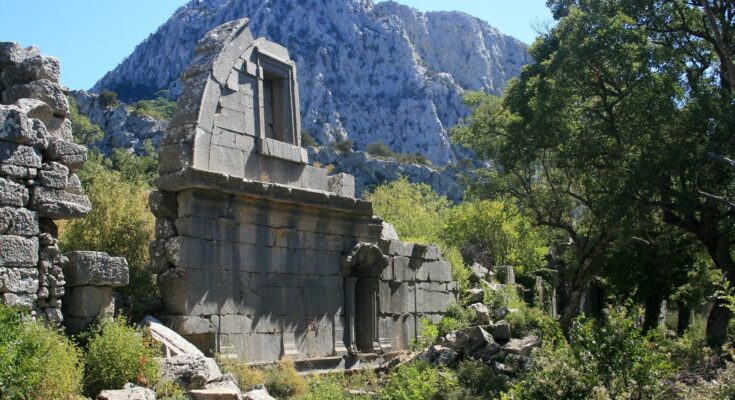Alexander the Great was successful in conquering almost everything he set his sights on, except for one place—Termessos. This is often referred to as the “Eagle’s Nest” city.
Alexander the Great attempted to conquer the ancient city of Termessos but ultimately failed. Today, the deserted ruins of this once-powerful city sit atop the mountains of southwestern Türkiye almost like an eagle’s nest.
Those who used to inhabit this city were called Solyms, the descendants of Luwians, an ancient civilization which spread across what is now Türkiye. However, the area was largely overlooked by historians until the past few decades. Nonetheless, very little continues to be known about the Solyms or when they built their city.
However, it is clear that they had some talent for building. The location was quite strategically chosen. Their home was built on a major trade route, allowing it to thrive through the movement of good and payments from people making their way to and from the Mediterranean. Additionally, its altitude and panoramic views made it easy to defend.
That’s why, when Alexander the Great tried to conquer it in 333 BC, marking the beginning of Termessos in the history books, he was unable to invade or blockade the city and force it to surrender despite his numerous efforts. The great conqueror is supposedly the one who first named the city “Eagle’s Nest.”
Arrian, an ancient historian who wrote an account of Alexander the Great’s attempt to conquer Termessos, highlighted that even a small force could easily defend the city because of its insurmountable barriers.
The location of the city at the mountain pass from the Phrygian hinterland to the plains of Pamphylia is also described by Arrian. Alexander the Great apparently wanted to head to Phrygia from Pamphylia, and according to Arrian, the way passed through, or by Termessos.
Was Alexander the Great tricked into going to Termessos?
There are more passes, lower down and easier to access, so it’s a bit of a mystery as to why Alexander the Great chose to climb the steep Yenice pass. It is sometimes speculated that his hosts in Perge sent him on the wrong path.
Alexander wasted a lot of time and energy attempting to force his way through the pass, which had been closed by the Termessians, and thus, in frustration, he turned towards Termessos and surrounded it.
According to Strabo, the inhabitants of Termessos were a Pisidian people called the Solymi. Their name, as well as the name given to the mountain on which they resided, was derived from Solymeus, an Anatolian god who, in later times, became identified with Zeus. This thus gave rise there to the cult of Zeus Solymeus.
The name exists to this day as a family name with some people in the Antalya region, providing evidence to their Solymi heritage.



